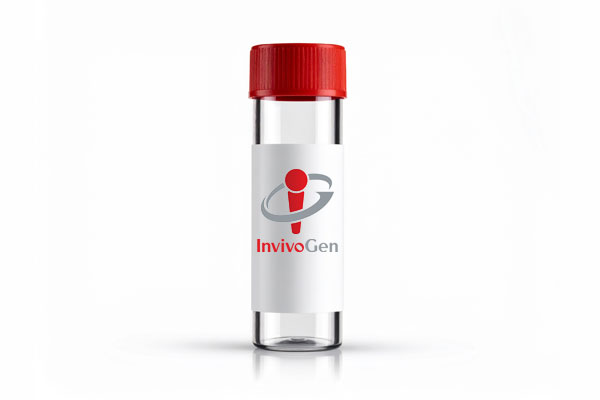
pTiGer2/3/4-SEAP
-
Cat.code:
ptg2-sp
- Documents
ABOUT
pTiGer-reporter: plasmids for Tet-inducible Gene expression or repression (controls)
InvivoGen's pTiGer-reporter plasmid family features a Tetracycline (Tet)-inducible expression cassette containing the strong composite CMV-EF1 promoter modified to integrate a tetracycline response element (TRE), a reporter gene, and an efficient terminator of transcription. Each plasmid carries an antibiotic resistance marker for selection in both mammalian cells and bacteria.
Our pTiGer-reporter plasmids are functionally validated by transfection of the tetracycline repressor-expressing RepTor™ cells (see below).
— pTiGer2/3/4-SEAP expresses secreted embryonic alkaline phosphatase
— pTiGer2/3/4-Lucia expresses Lucia luciferase
— pTiGer2/3/4-eGFP expresses enhanced green fluorescent protein
These three plasmids are selectable either with Zeocin® (pTiGer2), Hygromycin (pTiGer3), or Puromycin (pTiGer4), in both E. coli and mammalian cells.
Control of the TiGer tet-on system
pTiGer-reporter plasmids are a collection of control vectors for the pTiGer-mcs plasmids.
They can be transiently transfected into RepTor™ cells to demonstrate that the TiGer tet-on system works properly, i.e. no background reporter expression without doxycycline and strong reporter expression with doxycycline.
Moreover, the transfected RepTor™-reporter cells allow you to detect the presence of contaminating tetracyclines and derivatives in lots of fetal bovine serum used for cell culture. Indeed, although the TiGer tet-on system ensures maximal repression of the gene of interest (GOI), residual amounts of tetracyclines found in some serum lots can lead to unintended GOI basal expression.
Induction of the reporter expression in just two steps
Step 1: The pTiGer-reporter plasmid is transiently or stably transfected into HEK-RepTor™ or A549-RepTor™ cells. These cells express the tetracycline repressor (TetR) which binds to the TRE within the plasmid, repressing GOI expression [1].
Step 2: The addition of doxycycline, a synthetic derivative of the tetracycline antibiotic, leads to TetR release and reporter gene transcription. The SEAP and Lucia activities are readily assessable in the cell culture supernatant using QUANTI-Blue™ and QUANTI-Luc™ 4 detection reagents.
Of note, the composite Tet-inducible CMV-EF1-TRE promoter in the pTiGer plasmids confers strong expression and full induction of the reporter gene in the presence of 1 ng/ml of doxycycline. This low antibiotic dose ensures minimal toxicity or metabolic changes [2].
| SEAP | Lucia | eGFP | |
|---|---|---|---|
| Zeocin® | pTiGer2-SEAP # ptg2-sp |
pTiGer2-Lucia # ptg2-lc |
pTiGer2-eGFP # ptg2-gfp |
| Hygromycin | pTiGer3-SEAP # ptg3-sp |
pTiGer3-Lucia # ptg3-lc |
pTiGer3-eGFP # ptg3-gfp |
| Puromycin | pTiGer4-SEAP # ptg4-sp |
pTiGer4-Lucia # ptg4-lc |
pTiGer4-eGFP # ptg4-gfp |
Choose among pTiGer-mcs vectors for cloning your GOI
Plasmids of the pTiGer-mcs family feature a tet-inducible expression cassette containing the strong composite CMV-EF1 promoter modified to integrate a TRE, a convenient multiple cloning site (mcs), and an efficient terminator of transcription. Each plasmid carries an antibiotic resistance marker (i.e. Zeocin®, Hygromycin, or Puromycin).
References:
1. Hillen, W., Wissmann, A. (1989). Tet repressor-tet operator interaction. Protein-Nucleic Acid Interaction. DOI: 10.1007/978-1-349-09871-2_7.
2. Moullan, N., et al., (2015). Tetracyclines disturb mitochondrial function across eukaryotic models: a call for caution in biomedical research. Cell Rep. 10(10):1681-91.
All products are for internal research use only, and not for human or veterinary use.
SPECIFICATIONS
Specifications
Plasmid construct is confirmed by restriction analysis and full-length open reading frame (ORF) sequencing.
CONTENTS
Contents
-
Product:pTiGer2/3/4-SEAP
-
Cat code:ptg2-sp
-
Quantity:20 µg (ZeoR)
1 ml of Zeocin® (100 mg/ml)
Shipping & Storage
- Shipping method: Room temperature
- -20°C
- Avoid repeated freeze-thaw cycles
Storage:
Caution:
Details
TiGer Tet-on assay principle
InvivoGen's TiGer Tet-on system relies on the combined use of two plasmids; the first expressing an optimized TetR construct, and the second, pTiGer, a GOI under the control of an engineered tetracycline operator (tetO)-containing promoter. It features the strong composite CMV-EF1 promoter modified to integrate a tetracycline response element (TRE).
The TetR plasmid was stably transfected into the RepTor™ cell lines, to save you time and effort. Upon transfection of the RepTor™ cells with a pTiGer-GOI plasmid, TetR binds to TRE and blocks the transcription of the GOI. Addition of doxycycline, a synthetic analog of tetracycline, leads to the release of TetR from the tetO sequences, resulting in the derepression of the CMV-EF1-TRE promoter and transcription of the GOI.
The TiGer Tet-on system has been engineered to guarantee maximal repression of the GOI, ensuring minimal leakage of GOI expression in the absence of tetracycline/doxycycline, and strong GOI expression in the presence of the antibiotic. This key feature confers the TiGer Tet-on system with the advantage of working with cytotoxic genes (e.g. proteases, pore-forming proteins, gain-of-function variants).
DOCUMENTS
Documents
Technical Data Sheet
Plasmid Map and Sequence
Plasmid Sequence
Safety Data Sheet
Certificate of analysis
Need a CoA ?




